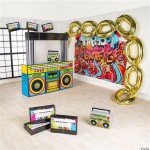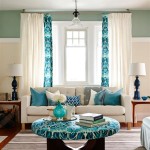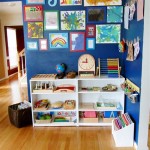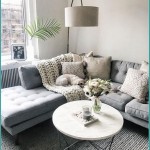Where to Start Decorating a Room
Decorating a room can be an exciting yet daunting task. With so many possibilities and styles, it can be overwhelming to know where to begin. Whether you're tackling a complete room overhaul or simply adding a few finishing touches, establishing a solid foundation is key to achieving a cohesive and aesthetically pleasing space. This article outlines a step-by-step guide to help you navigate the process of room decoration, providing actionable insights and practical tips.
Define Your Style and Function
The first step in decorating a room is to define its purpose and desired aesthetic. Consider the room's function and how you envision using the space. Is it a relaxing retreat, a vibrant entertaining area, or a productive workspace? Once you have a clear understanding of the room's intended use, you can begin to explore different styles that align with your vision. Do you prefer a modern minimalist aesthetic, a cozy farmhouse feel, or a bold eclectic mix? Researching various design styles and reviewing inspiring images can help you solidify your preferences and narrow down your choices.
A well-defined style will serve as your guiding principle throughout the decorating process. It will help you make informed decisions when selecting furniture, colors, and decor. This step can also be helpful in preventing design fatigue, as you'll have a clear direction to follow, minimizing the likelihood of veering off course or making impulsive choices that don't align with your overall vision.
Create a Mood Board
A mood board is a visual representation of your design ideas and acts as a tangible guide throughout the decorating process. It can be a physical board or a digital collage, featuring images of furniture, colors, patterns, and textures that inspire you. This tool helps you visualize the final look and feel of the room, ensuring that all elements work harmoniously together.
When creating your mood board, focus on gathering inspiration from various sources. Browse through design magazines, websites, and social media platforms. Look for images that resonate with you and represent your chosen style. Include a mix of colors, patterns, textures, and furniture pieces that you find appealing. This will help you identify recurring themes and patterns that inform your design choices.
As you compile your mood board, constantly evaluate whether the elements you've included align with your overall vision and chosen style. This step helps ensure that every element contributes to a cohesive and well-balanced design, preventing a cluttered or disjointed aesthetic.
Plan Your Layout and Furniture
Before you start purchasing furniture, it's crucial to plan the room layout and determine the placement of essential pieces. Use a floor plan tool or draw a simple sketch of the room to visualize different furniture arrangements. Consider the flow of traffic and the functionality of the space. For example, if you're decorating a living room, ensure that the seating arrangement encourages conversation and a comfortable flow of movement.
When choosing furniture, prioritize pieces that are both stylish and functional. Consider your lifestyle and the intended use of the room. If you entertain frequently, invest in comfortable seating and durable surfaces. Assess the size of each piece and ensure that it fits comfortably within the planned space. This will help you avoid overcrowding the room and maintain a sense of balance and visual appeal.
Measure the room carefully before purchasing any furniture, as this will help you avoid buying pieces that are too large or too small for the space. Consider the size of the doorway and the overall layout of the room to avoid any obstacles in the flow of traffic.
Choose a Color Palette
Color plays a vital role in creating a desired mood and atmosphere within a room. With careful consideration, you can leverage color to enhance natural light, accentuate architectural features, and create a sense of spaciousness or intimacy. Consider using a color wheel to explore complementary and analogous color schemes.
When choosing a color palette, remember that lighter colors tend to make a room feel more spacious, while darker colors can create a more intimate and cozy ambiance. Experiment with different shades and tones to find the perfect balance. You can use a dominant color for the walls and accent it with complementary colors on furniture, rugs, and accessories.
Consider the existing features of your room, such as the flooring, fireplace, or trim. You can use these as starting points to identify the most suitable color palette. If the room is flooded with natural light, consider using lighter colors to maintain a bright and airy feel. On the other hand, if the room receives limited natural light, darker hues may be a better choice.
Accessorize and Add Personal Touches
Once you've established the foundation with furniture, color, and lighting, it's time to add personality to your room through accessories and decorative elements. This is where you can truly express your style and create a space that feels uniquely your own. Include elements like artwork, throws, pillows, plants, and decorative accents that reflect your interests and hobbies.
When selecting accessories, consider their functionality and aesthetic appeal. A beautiful throw can add warmth and texture while serving as a cozy blanket. A stylish vase can add a touch of elegance and display fresh flowers. Incorporate pieces that hold personal significance to you, such as family photos, souvenirs, or artwork created by loved ones. These personalized details create a sense of warmth and connection within the space.
Remember that accessorizing is an ongoing process. You don't need to complete everything at once. As you continue living in your space, you can gradually add and rearrange accessories to adapt to changing preferences and styles. The key is to create a space that feels comfortable, inviting, and reflective of your unique personality.

Decorating 101 How To Start A Project

How To Start Decorating A House When You Feel Overwhelmed

How To Start Decorating Tips Begin A Room Redesign Home Stories Z

How To Begin Decorating Your Home From The Beginning

9 Steps To Start Decorating For Beginners Frame It Easy

How To Decorate A Living Room 11 Designer Tips Houzz
:strip_icc()/cdn.cliqueinc.com__cache__posts__209261__how-to-plan-a-room-209261-1544037018564-image.700x0c-6e987ea30b7e4197bf7370f55d0b20b7.jpg?strip=all)
How To Decorate Your Home From Start Finish

How To Design A Room Like An Interior Designer Step By Greenhouse Studio

Ways To Start Decorating A Room From Scratch

Where To Start When Decorating A New Home From Scratch
Related Posts







